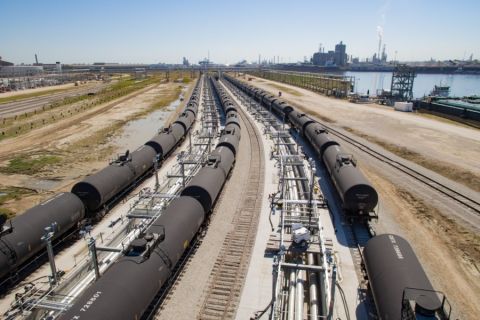I have been covering the oil and gas industry for 15 years, and while many things have changed and evolved over that time, one theme remains constant – the importance, and difficulty, of data management. One hears the same stories repeated over and over – geophysicists spend 70% of their time looking for data and 30% working with it, oil companies would rather repurchase datasets than try to find the copy they bought five years ago, etc. Despite the talk about “seamless integration” coming from software vendors, data management issues have largely not been tackled successfully, and with improvements to sensors and more instrumentation in oil fields, they are only going to get worse.
Companies have tried various strategies. Jose Jimenez, director of global energy for business intelligence services at HP, characterized these as “rip and replace” and “federated.” The rip-and-replace strategy is a single-vendor solution that forces different groups to conform to one standard and requires periodic updates that are costly and disruptive. The federated approach uses master data management techniques to create a master index linking non-integrated data and fosters data consistency. This approach, however, is limited in its ability to access all of the data in the system, and companies are forced to pick only a few of the dozens of attributes associated with any given asset such as a well to access.
Jimenez suggests a new approach, which he calls a unified business framework. “It’s about creating a corporate data store that is based on PPDM standards and bringing in information from wells, well reporting, geotechnical systems, surveillance, operations, even economic models and accounting systems,” he said. “The well is the glue that brings together all of that information.”
To this data store is added a master data management layer that allows users to access information without regard to its original format. Applications also can access the data store. “They don’t have to be hard-wired to 20 different systems out in the field,” he said.
The benefits of such a system would include geoscientists and engineers having more time to evaluate datasets rather than look for them, which likely would lead to better drilling decisions and greater efficiency. It also would remove the guesswork involved in knowing which version of a dataset the user actually is viewing.
And it might become a necessity as the amount of available data continues to mushroom. “If you’re having problems now just parsing through and running the analysis to get information into a state where people can use it, that’s going to get more complicated as more information is made available to the end users,” Jimenez said. Yet many companies are leery of such a new approach. “We see it every day – companies will say, ‘I know I’ve got this problem, and I know my engineers spend a lot of time looking for data, but we manage,’” he said. “Three years from now they’ll have 100 times the amount of information they manage now, and they may have inexperienced engineers because the older ones cashed in their options and are now living in Hawaii. People are starting to react to that.”
But for companies that are gun-shy about embracing this type of change, Jimenez has a few “rules of the road.” First is to look beyond the technology. Take the time to improve processes to take full advantage of a change in systems. Second, define the right data-governance structure. Do a company’s data assets reside on the business side or the IT side? It makes sense to develop a balanced approach to data governance that includes both perspectives.
Third, implementation of a new data management approach needs executive sponsorship. Leadership is a key element to drive change, and it also is necessary to control and allocate resources. Fourth, chart an evolutionary path. Jimenez said that even some of the single-asset projects HP has worked on take three years to implement. A company-wide implementation should be built in phases, with each phase incorporating data from a specific functional group.
Finally, keep an eye on future requirements. “When I talk to my clients, I say, ‘Don’t look at the technology today; look at the technology three years down the road. Talk to your vendors and have them explain their roadmap to you,’” he said.
“This is not a technology project. It’s really a business transformation project that has all of the different components – processes, people, governance, and technology. And it’s not just the integration – it’s getting all of the parties involved to agree to what they’re going to do and how they’re going to do it. It’s a challenge, but it has its rewards as well.”
Recommended Reading
Enterprise Targets FID for SPOT Project by End of 2024
2024-05-01 - Enterprise Products Partners’ co-CEO disputed capex figures reported in the media regarding its Sea Port Oil Export Terminal.
US Reforms Green Law to Speed Clean Energy, Infrastructure Permits
2024-04-30 - The reforms are the second and final phase of adjustments to the National Environmental Policy Act, or NEPA, by the Biden administration.
Canadian Railway Companies Brace for Strike
2024-04-25 - A service disruption caused by a strike in May could delay freight deliveries of petrochemicals.
Enterprise’s SPOT Deepwater Port Struggles for Customers
2024-04-25 - Years of regulatory delays, a loss of commercial backers and slowing U.S. shale production has Enterprise Products Partners’ Sea Port Oil Terminal and rival projects without secured customers, energy industry executives say.
Report: Crescent Midstream Exploring $1.3B Sale
2024-04-23 - Sources say another company is considering $1.3B acquisition for Crescent Midstream’s facilities and pipelines focused on Louisiana and the Gulf of Mexico.



